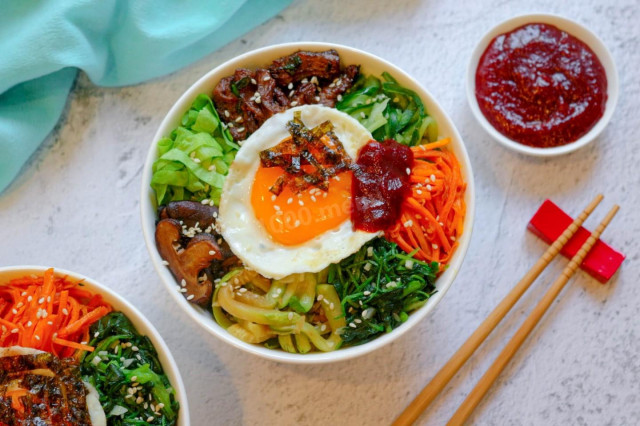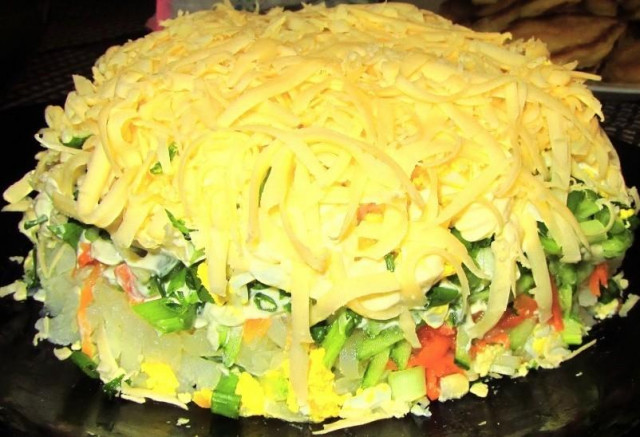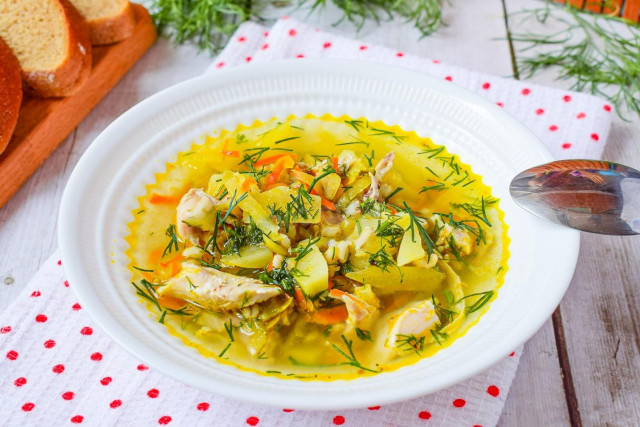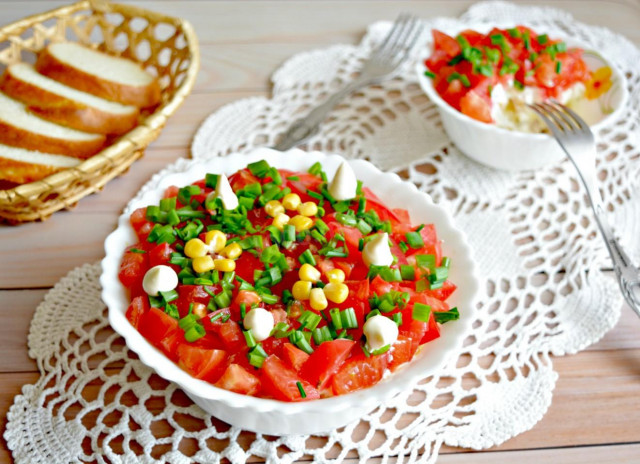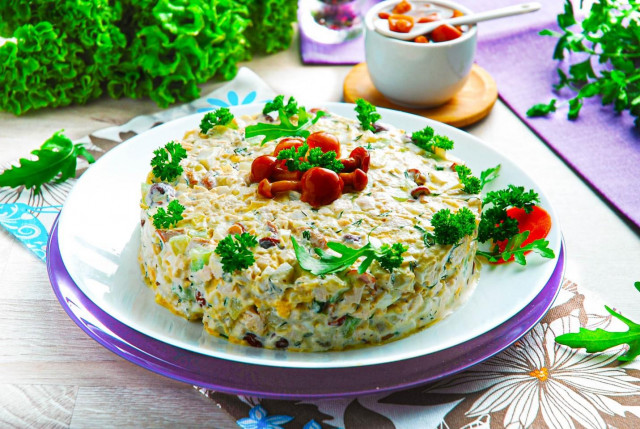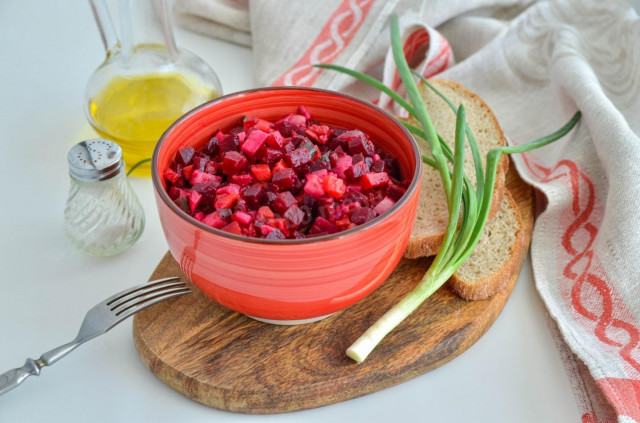Composition / ingredients
Step-by-step cooking
Step 1:
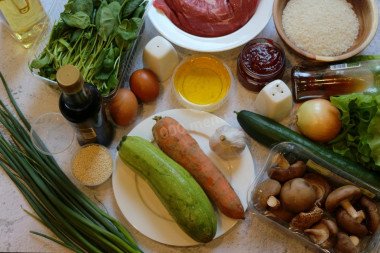
How to make a Korean pibimpab? Prepare the products. Immediately fry the sesame seeds in a dry pan, so that later you can simply add it to the ingredients, and also chop the garlic and chop the onion.
Step 2:
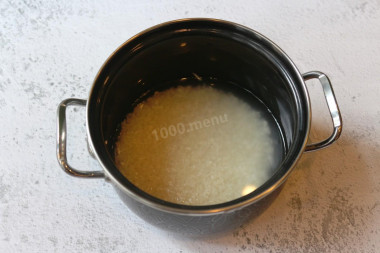
Take the round, not steamed rice, put it in a saucepan and rinse 2-3 times. Then pour the water into the rice again and leave it to soak for 30 minutes. After this time, drain the water, pour it fresh in a ratio of 1:1 and put the rice to cook with the lid closed. As soon as the water boils, lower the temperature to the minimum and cook the rice for 20 minutes. Then turn off the heat and bring the rice to full readiness, leaving it under the lid for another 10 minutes.
Step 3:
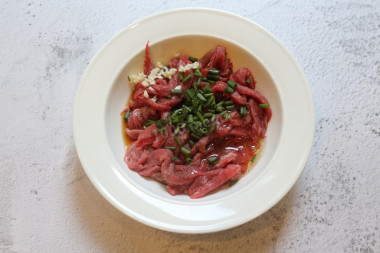
Cut beef into thin strips 1 cm wide. Mix the beef with garlic, green onion, black pepper, soy sauce (0.5 tbsp.l.), honey and sesame oil (1 tbsp.l.). Marinate the meat for 30 minutes. Then fry it in a frying pan for 5 minutes at high temperature.
Step 4:
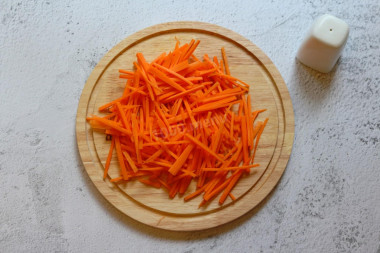
Prepare the vegetables for the pibimpab. Cut the carrots into thin strips, about 5 cm long. It is best in this case to use a slider with a special nozzle for thin slicing. But you can also work with a knife. Add salt to the carrots and fry in a frying pan over high heat for 2-3 minutes.
Step 5:
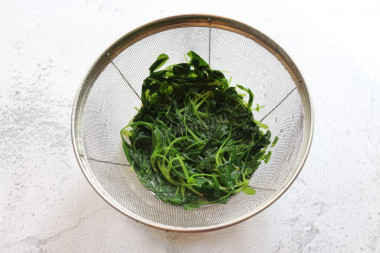
Rinse the spinach. In a separate saucepan, bring the water to a boil, add salt to it, then blanch the spinach for 30-40 seconds. Then rinse it in cold water, squeeze it slightly to get rid of unnecessary water.
Step 6:
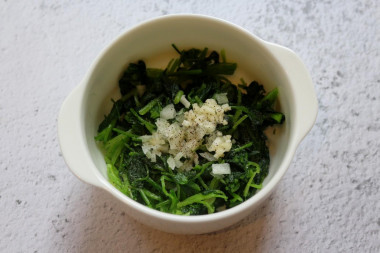
Cut the spinach into strips or medium pieces. Then mix with chopped onion and garlic (0.5 tsp each), a small amount of sesame oil, salt and pepper.
Step 7:
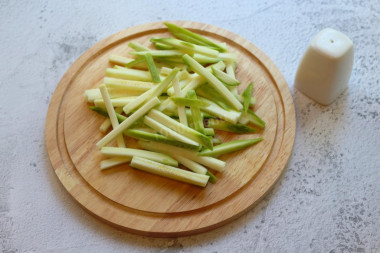
Cut the zucchini into thin strips, without using the core of the zucchini with seeds. Marinate it for 15 minutes, sprinkling the straw with salt.
Step 8:
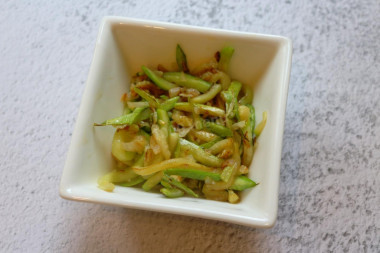
Then drain the resulting liquid, add chopped onion (0.5 tbsp.l.) and chopped garlic (0.25 tsp. l.), sesame oil. Fry the zucchini in a frying pan for a couple of minutes over medium heat.
Step 9:
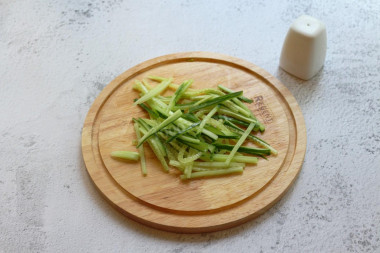
Cucumber, like all vegetables, cut into strips.
Step 10:
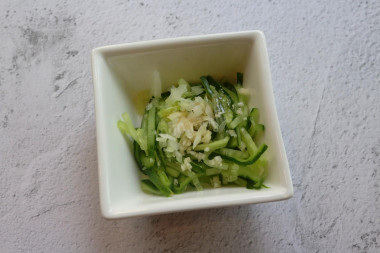
Do everything the same as you did with the squash. The only thing is that the cucumber does not need to be fried.
Step 11:
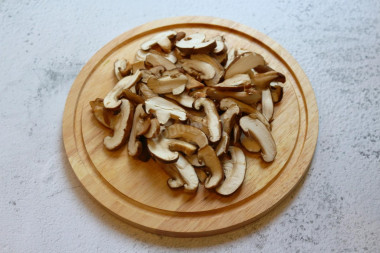
Gently wash and dry the mushrooms. Slice the shiatke thinly, in plates. Lightly fry them in vegetable oil. At the end of frying, add a little soy sauce.
Step 12:
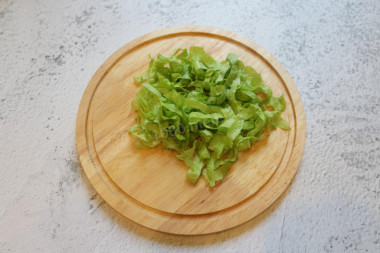
Cut the lettuce leaves not coarsely.
Step 13:
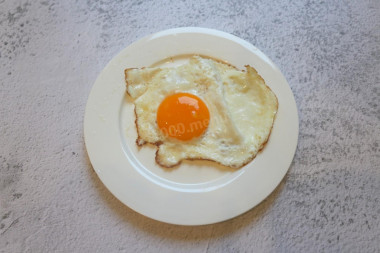
Fry two fried eggs.
Step 14:
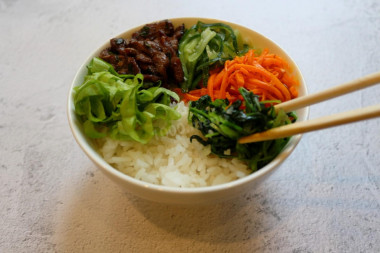
Put a portion of rice in each bowl. Put the rest of the ingredients in piles around the rice (vegetables and meat).
Step 15:
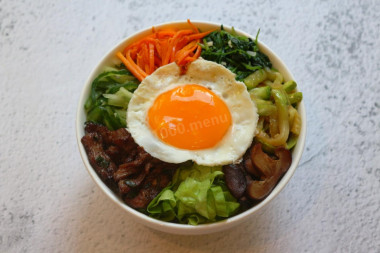
Put the scrambled eggs in the center.
Step 16:
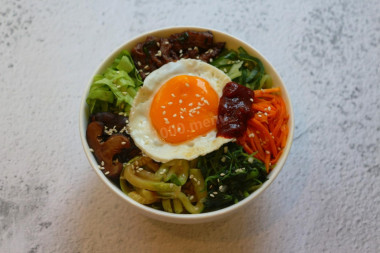
Season the pibimpab with Korean chili paste kochhujan. Sprinkle sesame seeds on top of the dish.
Step 17:
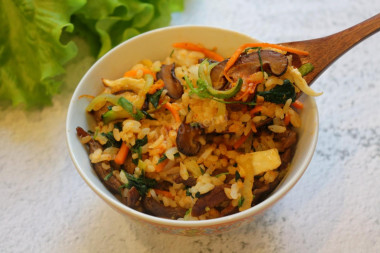
Before the start of the meal, each guest mixes all the ingredients in the bowl well. Pibimpap can also be decorated with nori stripes (optional). Enjoy your meal!
How to eat a pibimpab? It is not customary to eat this dish separately, as many foreigners do. This is indicated by the name of the dish itself, because in Korean Bibim means mixing, and bap means rice. The mixing process itself takes place at the table immediately before eating.
In fact, in Korea, different ingredients can be used to make pibimpap. It depends on what area it is being prepared in and what grows there. At home, Korean housewives often make pibimpap using side dishes left over from previous dishes. It is very convenient and practical. Thus, the dish itself consists of rice, eggs and several types of snacks. Therefore, if you are preparing a pibimpap, then you can safely use, for example, not 7 snacks, but 3-4. This will already be quite enough. But, the more snacks, the dish will be more diverse and rich in taste.
Feel the taste of each ingredient of this dish and the harmony of all the ingredients together!
When adding soy sauce to the dish, it is worth considering that it has a rather salty taste. Reduce the total amount of salt, otherwise you risk over-salting.
Use oil with a high smoking temperature for frying! Any oils are useful only until a certain temperature is reached - the point of smoking, at which the oil begins to burn and toxic substances, including carcinogens, are formed in it.
Unrefined oils, with rare exceptions, have a low smoking point. There are a lot of unfiltered organic particles in them, which quickly begin to burn.
Refined oils are more resistant to heating, and their smoking point is higher. If you are going to cook food in the oven, on a frying pan or grill, make sure that you use oil with a high smoking point. The most common of the oils with a high smoking point: refined varieties of sunflower, olive and grape.
Which zucchini will suit best? Choose young fruits with tender skins. Wash them and peel them. It is not necessary to cut off a very thin skin. If you use more mature zucchini, cut off the rough peel and cut out the middle with the seeds.
Caloric content of the products possible in the composition of the dish
- Fresh cucumbers - 15 kcal/100g
- Melted beef fat - 871 kcal/100g
- Fat beef - 171 kcal/100g
- Lean beef - 158 kcal/100g
- Beef brisket - 217 kcal/100g
- Beef - okovalok - 380 kcal/100g
- Beef - lean roast - 200 kcal/100g
- Beef shoulder - 137 kcal/100g
- Beef - ribs - 233 kcal/100g
- Beef - ham - 104 kcal/100g
- Beef - tail - 184 kcal/100g
- Boiled ham - 269 kcal/100g
- Beef corned beef - 216 kcal/100g
- Zucchini - 23 kcal/100g
- Carrots - 33 kcal/100g
- Dried carrots - 275 kcal/100g
- Boiled carrots - 25 kcal/100g
- Honey - 400 kcal/100g
- Garlic - 143 kcal/100g
- Shiitake - 34 kcal/100g
- Spinach - 22 kcal/100g
- Ground black pepper - 255 kcal/100g
- Soy sauce - 51 kcal/100g
- Vegetable oil - 873 kcal/100g
- Green onion - 19 kcal/100g
- Nori - 3 kcal/100g
- Dried whole sesame seeds - 563 kcal/100g
- Shelled sesame seed - 582 kcal/100g
- Salt - 0 kcal/100g
- Onion - 41 kcal/100g
- Chicken egg - 80 kcal/100g
- Sesame oil - 899 kcal/100g
- Round rice - 330 kcal/100g
- Lettuce leaves - 12 kcal/100g

